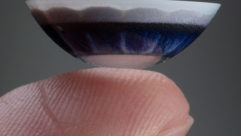
Getting Ink
Nov 10, 2010 3:41 PM,
By Don Kreski
How to work with the press to build your reputation and sales.

Which is more believable: something you read in a magazine article or something in an ad?
Advertising has an important place in the marketing mix, but if you’re trying to build credibility for your company, at some point you’ll want to approach the press and ask them to publish stories about your business.
“AV integrators need to get the word out that they are reliable,” says Mark Mayfield, editorial manager for Extron Electronics. “Being mentioned in a trade publication gives you credibility in the eyes of your customers and peers that you can use to promote your business.”
Related Links

If you want to write in a way that makes your business more successful, you may have to forget what your high school English teacher taught you…

If you’re thinking about creating an online video to promote your business, you’ve probably asked yourself, “What’s the best way to make it happen?”…

“It’s important that we find ways to communicate the quality of the work we do—not just with our usual marketing brochures, but with something more interactively appealing.” That’s what Candace Clarke, communications editor for AVI-SPL…
Mayfield has a lot of experience in working with the press. Not only has he worked in marketing for Extron and several audio equipment manufacturers, he has been editor of three AV trade magazines. I asked him if he agreed with a statistic I’ve seen: that at least 50 percent of the stories in any newspaper or magazine start with a press release or an idea from a publicist. “I think that’s a good number,” he says. “Most trade magazines do their own research and industry analysis, but some publish submitted stories, and they do react to bugs that people plant in their ears.”
The publicity process works because it is helpful to the companies submitting the stories and helpful to the magazine editors. “They all have pages to fill,” Mayfield explains. “If you can give them something of value for their readers—whether a project profile, a tip, a technology lesson, or something they can use in their businesses—then the editors will welcome it.”
Elements of a good story
In my own years of working with the press, I have found that there are five important parts to any story idea:
1. It should have news value. “The point of a technology-oriented publication is to educate its readers about new products and how to use them,” says Brooke Lange, a former editor of trade and consumer magazines in the residential systems market. If you are submitting an installation case history, she suggests, it should be within a few months of completion and highlight new ideas useful to the magazine’s readers.
2. It should have educational or entertainment value. “In the trade magazine, we always tried to run stories that would help our readers grow their businesses,” Lange says. “In the consumer magazines, some were definitely educational, but others were there for their entertainment value.”
The most successful publicists know they have to read the magazines they pitch to. When you look at a publication, ask yourself, “Is this the type of story it regularly prints? If not, is it something that will be helpful to and of interest to its readers?”
3. Your story or story proposal must be clear, straightforward, and easy to read. “You want brief copy that’s not flowery and not showing obvious bias,” Mayfield explains. “You have to keep the advertising out of the text, or the editor will cut it or just not use the story. If you study the magazine and emulate the style its writers normally use, you have a better chance of being published without major revisions.”
Lange says that every editor tries to set his or her publication apart. “I was always looking for ideas that were unusual,” she says. “We wanted to publish stories that, if nothing else, were packaged in a way that was different and more interesting than what our competitors were running.”
4. It must forward your marketing goals. Some publicists argue that any ink is good, but the best stories subtly balance the needs of the reader, editor, and company originating the idea.
5. It must be illustrated in quality high-resolution images. The best way to sell a story to an editor is through art. When images, especially professional images, have been taken, it’s an indicator to the editor that the story is print-ready—possibly even landing it on the cover.
Getting Ink
Nov 10, 2010 3:41 PM,
By Don Kreski
How to work with the press to build your reputation and sales.
“When I was an editor,” Mayfield says, “photography was always on the top of my list.” Very few publications have the budget to shoot their own photos these days. “You need well-lit, high-resolution images that show what you’re trying to explain or promote.” (Read more photography tips.)
Mayfield suggests that most AV trades are looking for case studies and business ideas from integrators, and product news and technology overviews from manufacturers. “Most editors think they have a broader view and tend to write stories about market and technology trends themselves,” he adds. “On the other hand, if you’ve done some research that you’re willing to share, you can usually find editors interested in publishing it. Stories like that can build your image as someone who understands the market.”
Editors of magazines serving other fields—education, law, banking, real estate, and so on—are much less cognizant of what AV can do for their readers. “That’s an opportunity and an obstacle,” Mayfield says. “They are less likely to listen to your story idea, but if you can show them how it will benefit their readers, you will have a unique opportunity to highlight your services to that market.”
Approaching the media
Approaching an editor is a lot like approaching a potential customer. You want to establish a friendly, long-term professional relationship based on mutual respect and mutual profit. As with your customers, you need to understand the editors’ needs and respect them. You need to keep your promises, tell the truth, and respect their deadlines.
“Editors can tell right away which PR people get it and which do not,” Lange says, “so I always make time to listen to the good ones, the ones who know how to put themselves in my shoes. For those PR folks who don’t get it—for those I’ve had to chase in the past for background information, an interview, or for magazine-quality photography—well, I let’s just say I proceed with caution.”
“Know who does what at each publication,” Mayfield suggests. For trade magazines, the editor or managing editor is often the best person to approach, but for newspapers, business journals, and consumer magazines, you will need to learn which reporters cover relevant beats.
Once you have an idea for a story, send a press release, story proposal, or finished article to an editor or reporter first through email, but as with any sale, follow up by telephone.
Press releases are most appropriate for news items such as new product announcements, seminars, events, or personnel changes. Because you send them in large numbers, editors know that if they pick them up, it’s likely that competing publications will do the same. “Most often, I would use releases about finished projects only if they fit into some other story I was working on,” Mayfield says.
Story proposals are more appropriate for a project profile or a feature story. You need to offer them on an exclusive basis, promising that you will not approach any other publication going to the same readers, at least until the piece has been published. Some publicists will pitch similar stories to magazines in different fields. Some will repackage an exclusive story as a press release after its original publication to try to get some additional coverage.
Once the article has been published, secure reprints, a .pdf copy, or a link to the online edition for your website. A reprint, given to a prospective client when he or she is making a buying decision, can be more valuable than the original placement.
Success with the media requires an investment either of your time or the services of a publicist or PR firm. If you approach it thoughtfully, you will find publicity can be a valuable addition to your marketing mix.
Don Kreski is the president of Kreski Marketing Consultants, which offers marketing services to the AV industry. You can reach him at www.kreski.com/contact.html.









